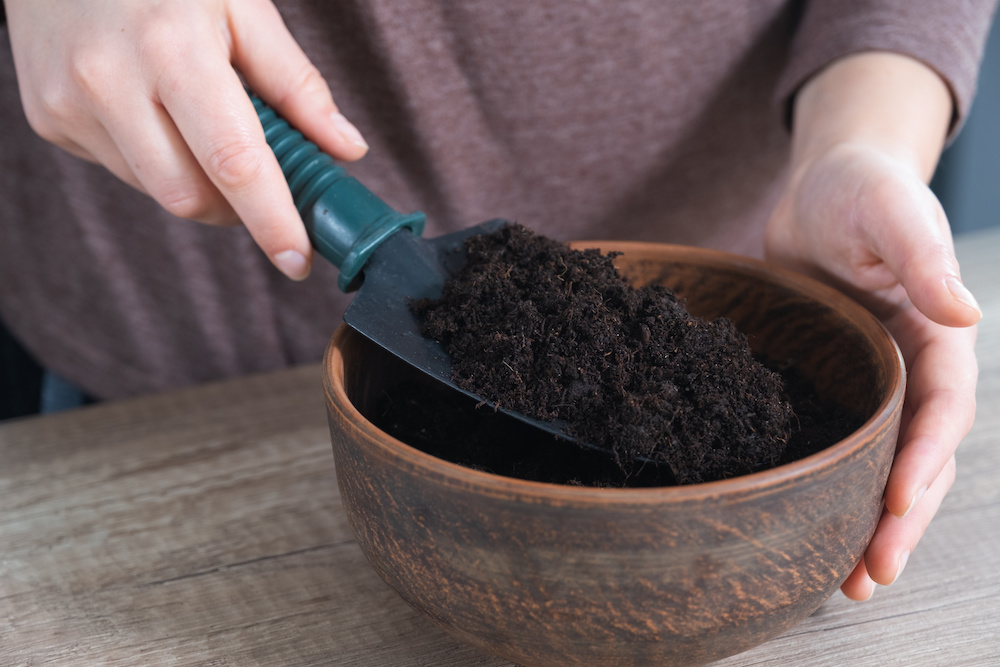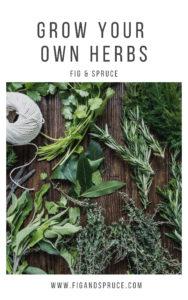The term “bog” itself can often conjure images of dank, dark, and even smelly land areas.
But in reality, the term is used to describe a type of wetland, and bog gardens are actually stunning and much sought-after.
Many unusual species of plants thrive in bog gardens, and recreating this unique natural habitat allows you to grow them at home.
Let’s explain how to create a bog garden in a container in just six easy steps.
We’ll also discuss how to plant and care for them, so stay tuned.
Table of Contents
How To Create a Bog Garden in a Container
Let’s take a quick look at what a bog is and how they form within nature.
When you have a better understanding of what a bog is, you may find it easier to establish and maintain this habitat for yourself at home.
What Is a Bog Garden?
A bog is a freshwater wetland usually formed throughout hundreds or thousands of years from decaying plant matter.
These decomposing plants become waterlogged and form thick layers of soft, spongy peat that is acidic, infertile, and low in oxygen and nutrients.
The saturated nature of the bog substrate means that it also doesn’t receive nutrients from runoff or adjoining land and the only water it gets is from the rain.
As you can imagine, many plants can’t survive in these circumstances.
That said, a large and diverse group of plants evolved to thrive in these harsh and unique conditions.
Bog Garden Plants
Species that thrive in bogs can withstand “wet feet”, acidic soil, and low nitrogen, typically receiving no nutrients from the soil.
Some of the plants that adapted over the years include some evergreen trees and shrubs, ferns, mosses, liverworts, water lilies, and orchids.
Cranberries, blueberries, and carnivorous species, including plants such as sundews, venus fly traps, and pitchers, can also survive in such conditions.
Carnivorous plants feature unique botanical structures that allow them to survive by trapping their food and nutrients.
Other species, such as the orchids and berries, survive via symbiotic relationships with mycorrhizal fungi.
These fungi colonize the root systems of the plants and provide them with nutrients.
Can You Make a Bog Garden in a Container?
If you have limited space at home, then you can create a container bog garden.
Creating a container bog garden is a great idea for people who don’t want to do any excavating or landscaping.
It’s also perfect for those who want an indoor bog garden.
How Do You Make a Simple Bog Garden in a Container?
Luckily, it won’t take you thousands of years to create a container bog garden at home, as recreating this habitat is quick and easy.
The most important factor to remember when creating a bog garden is that it will need at least five hours of full sunlight per day.
Below are the recommended steps you need to take to succeed in making simple bog gardens.
Step #1: Choose a Container
Your bog garden container should ideally be a minimum of eight to 12 inches deep and eight inches in diameter or larger.
The larger your container is, the less quickly it will dry out. Any pot or container that holds water will suffice.
You could use a plant pot, rigid pond liner, or even a kiddie paddling pool, depending on how big you want your bog garden to be.
Step #2: Line the Bottom
Line your container up to a third of its depth with coarse builder’s sand, pea gravel, or crushed lava rock.
They can provide water space for your plants.
Step #3: Add Bog Soil
Next up, add a minimum of six to eight inches of bog soil or bog potting mix (see how to make this below).
Note: If your container is large enough, you may wish to consider adding a small planter with holes to the middle of the container before adding your bog soil.
Place the planter in the middle of your container, on top of your substrate liner, and then pack the bog soil all around it.
This gives you a safe place to water your bog garden without disturbing any of the plants.
It also makes it easier to see if your bog garden needs watering, as the planter should always have water in it.

Step #4: Hydrate and Wait for One Week
Saturate your container with water, place it in a sunny spot, and wait for a week.
During this week, the peat will fully absorb the water and the pH balance of your bog has time to balance itself.
Step #5: Ready to Plant
Now your bog is ready to plant with your chosen plants.
Once you’ve selected your plants, arranging them will make a massive difference to the overall presentation of your bog.
If your bog garden will mainly be viewed from one side, place the taller plants and flowers towards the back.
If you will use your DIY bog container garden as a centerpiece, consider planting the taller species in the center and terrace them outwards with shorter plants.
Step #6: Add Live Moss
Once you’ve planted your chosen plants, you must surround them with live moss.
Live moss will help maintain a healthy and stable biotic environment for your plants.
It will also help prevent them from drying out too quickly.
It also looks great and helps camouflage the edges of your container.
Your Boggy Questions, Answered
If you’re reading this step-by-step guide, then it’s safe to assume that you’re a newbie to the bog gardening world.
To help make your life easier, we’ve answered some of the more frequently asked questions we often receive about bog gardening.
How Do You Make Bog Soil?
You can make bog soil by mixing one part builder’s sand with two to three parts of peat moss.
If possible, we also recommend that you add a couple of handfuls of long-fibered sphagnum moss.
Does a Bog Garden Need Drainage?
Unlike other habitats and gardens, bogs are waterlogged areas.
The bottom of a bog garden should be completely watertight, so when creating a bog garden in a container, the container you use shouldn’t have any holes in it.
Where Can I Source Live Moss From?
You can collect live moss from wet woods for free, but make sure the woods aren’t on public parkland.
You can also buy live moss commercially from some garden centers.
How Do I Care for My Bog Garden?
Caring for your bog garden is easy since all they need to thrive is plenty of sunlight and water.
Place your container in a bright, sunny area where it can receive at least five or six hours of direct sunlight per day.
Check it daily to ensure it has enough water and pick out any weeds that become visible.
If your tap water has a pH lower than eight, you can water your bog garden with tap water.
In most cases, rainwater or distilled water is better.
Never let the substrate dry out and fertilize or feed your bog garden.
Common fertilizer ingredients, such as nitrogen and phosphorous, are toxic to many bog plants.
How Do You Choose Bog Garden Plants?
When selecting your bog garden plants, especially carnivorous species, cold-hardiness should be your biggest concern.
You can check which zone of the USA you live in by visiting the United States Department of Agriculture’s website.
If you live in zones seven to 10, you can grow most American pitcher plants, venus fly traps, and most temperate butterworts and sundews.
If you live in zone six, try to focus on plants that are native to Carolina and further north.
Trumpet pitcher plants, sweet pitcher plants, and purple pitcher plants will do well here.
If you live in zone five or colder, you’ll need especially cold-tolerant plants, such as the round-leaf sundew or common butterwort.
There is also a northern subspecies of the purple pitcher plant that will grow in these regions.
Orchids will also add seasonal interest, with grass pink blooming in spring to early summer.
Nodding ladies’ tresses cultivar “Chadds Ford” will follow nicely by blooming in the late summer.
Responsible Sourcing
Always source your orchids and carnivorous plants from reputable nurseries and dealers.
Poaching wild plants like these can threaten the existence of these fascinating plants in their natural environments.
Beautiful Bog Gardens
Now you know how to create your own DIY bog container gardens, the next step is choosing what unique and wonderful plants to grow in them.
You can even create these fascinating habitats in miniature form and have an indoor bog garden in a glass jar.
They make interesting centerpieces that will catch lots of houseflies and are great conversation starters.
However, bog plants need a lot of light, so be prepared to keep them in a sunny location outdoors for most of the year.

